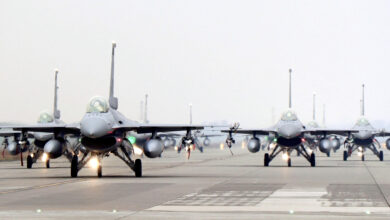US Army to Deploy Laser-Equipped Stryker Platoon
The US Army will begin its official deployment of a laser-equipped Stryker armored vehicle platoon next month.
A spokesman for the army’s Rapid Capabilities and Critical Technologies Office (RCCTO) told Task and Purpose that four Stryker vehicles outfitted with 50-kilowatt laser weapons would arrive at Fort Sill, Oklahoma, in January.
The office has begun new equipment training to prepare soldiers for the fielding of the Directed Energy Maneuver-Short Range Air Defense (DE M-SHORAD) platoon.
The spokesman also revealed that the weapon’s critical subsystems had successfully demonstrated “a high degree of technical readiness” for official deployment.
The US Army has now successfully mounted laser weapons on its Stryker vehicle. This is designed to defeat drones, UAVs & incoming missiles. pic.twitter.com/o07R5qlNew
— Nicholas Drummond (@nicholadrummond) March 30, 2017
Delay
Earlier this year, the RCCTO announced that it would start fielding its Stryker-mounted laser weapon in September when the first battery arrived in Oklahoma.
However, the DE M-SHORAD laser system remained in development for a few extra months to ensure that the cutting-edge weapon could be produced and deployed at scale.
The delay was also caused by additional prototyping, system-level testing, and soldier training.
“We want to make sure when we actually transition a program or a capability that we mature not just the prototype from an operational capability but have a good competitive space and good manufacturability processes in place,” RCCTO chief Lt. Gen. Robert Rasch told Defense News in October.
Weapon Capabilities
During a live-fire test in May, the Stryker-mounted laser weapon successfully acquired, tracked, targeted, and defeated multiple mortars.
Its directed energy also neutralizes small, medium, and large drones.
According to Raytheon, the 50-kilowatt laser can provide soldiers with a new level of protection as the army faces increasingly complex threats.
“The Army gave us our toughest challenge yet — countering rockets, artillery, and mortars — and we took an essential step on the path to providing the maneuverable, short range air defense soldiers need,” company official Annabel Flores explained.












